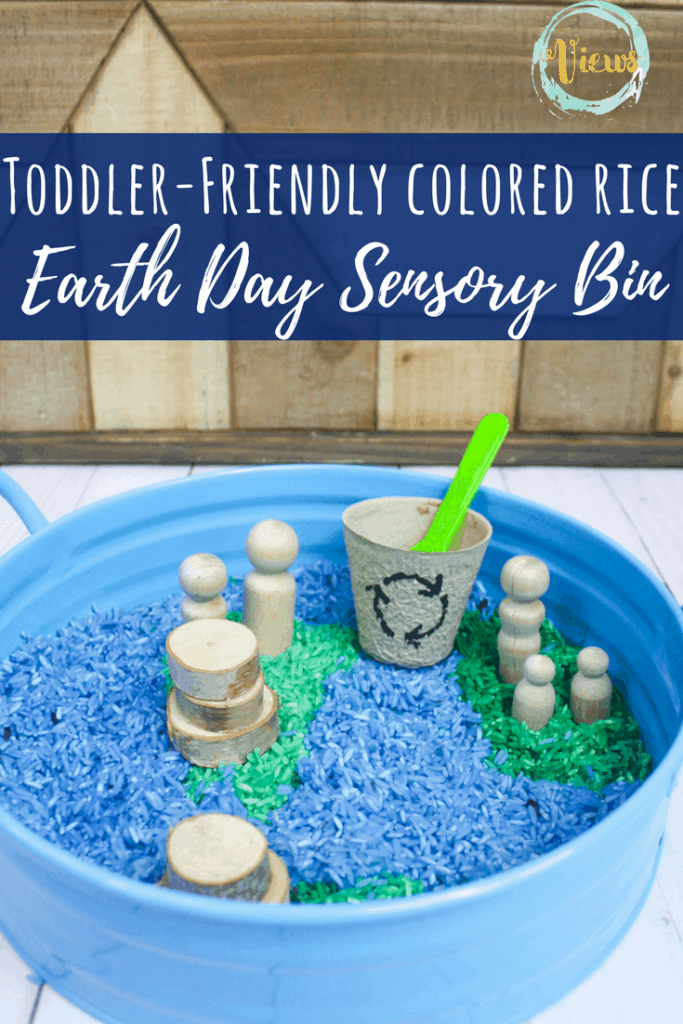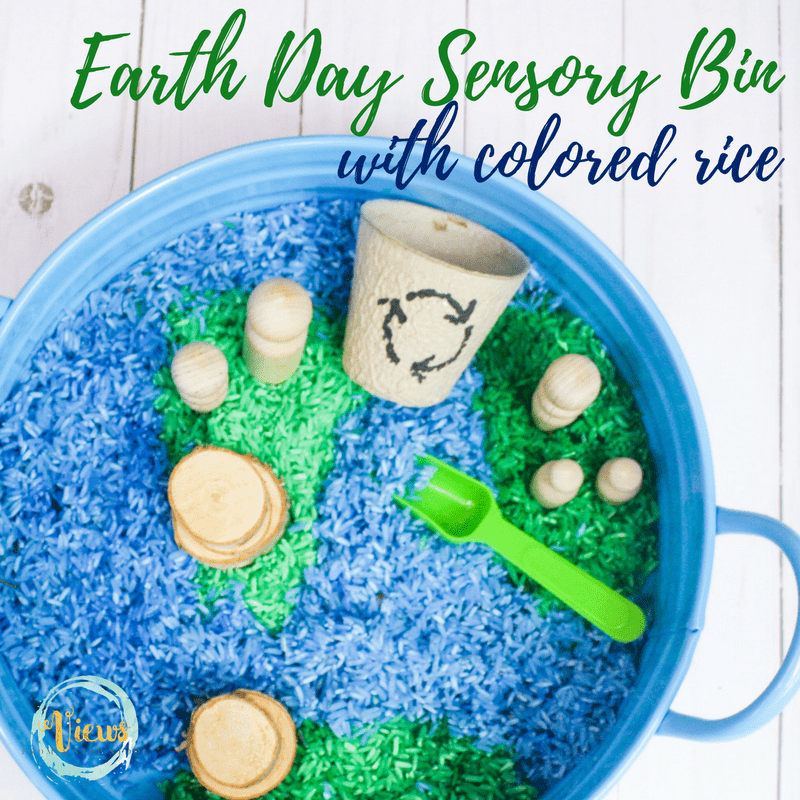Earth Sensory Bin
Are you looking for a fun and educational activity to do with your children or students? Look no further than an earth sensory bin! This engaging activity allows kids to explore and learn about the planet we call home in a hands-on way.
For many children, the idea of caring for the environment can be an abstract concept. By using a sensory bin, you can help them better understand the importance of taking care of our planet by giving them a visual and tactile experience. Additionally, sensory play can be incredibly beneficial for children's development, helping with things like fine motor skills, problem-solving, and language development.
The target of an earth sensory bin is to teach children about the environment and the importance of caring for the planet in a fun and interactive way. By using materials like colored rice, flower petals, and miniature figures, children can create their own little world inside the bin while learning about different aspects of the environment.
In summary, an earth sensory bin is an engaging and educational way to teach children about the environment and encourage them to develop an appreciation for the planet. With its numerous benefits for children's development and learning, it is an activity worth exploring.
The Benefits of an Earth Sensory Bin
When my daughter was four years old, we created an earth sensory bin together. We used different shades of blue and green rice to mimic the oceans and continents of the earth. We also added miniature animals, people, and trees to represent different ecosystems. As we played together, we talked about different aspects of the environment, like recycling and reducing waste. It was a fun and memorable experience for both of us.
Using an earth sensory bin can provide children with numerous benefits beyond just learning about the environment. Through tactile and imaginative play, children can learn important skills like problem-solving, critical thinking, and language development. It also gives them an opportunity to practice things like fine motor skills and sensory processing, which can benefit their overall development.
Creating an Earth Sensory Bin
Creating an earth sensory bin is easy and can be done with a variety of materials. You can use colored rice, sand, or water to create the base of the bin. Then, add different items like miniature figures, flower petals, or even recyclable materials to represent different aspects of the environment. Encourage children to play and explore freely, and use the opportunity to talk with them about different environmental concepts.
Using an Earth Sensory Bin in the Classroom
An earth sensory bin can be a great addition to a classroom lesson about the environment. Depending on the age of the children, you can use the bin to teach a variety of concepts like recycling, ecosystems, and climate change. This can be a fun and engaging way to get children involved and interested in learning about the world around them.
Tips for Keeping an Earth Sensory Bin Safe and Clean
When using an earth sensory bin, it's important to take some precautions to keep children safe and the bin clean. First, make sure to supervise children while they play to prevent them from eating any of the materials. Additionally, make sure to store the bin in a clean and dry area to prevent mold or bacteria growth. Finally, disinfect and replace the materials in the bin regularly.
FAQs About Earth Sensory Bins
What age is appropriate for an earth sensory bin?
An earth sensory bin can be appropriate for a variety of ages, from toddlers to elementary school age. Depending on the age of the children, different materials and levels of supervision may be needed.
What materials can I use to create an earth sensory bin?
You can use a variety of materials to create an earth sensory bin, including colored rice, sand, water, flower petals, miniature figures, and recyclable materials.
How can I use an earth sensory bin to teach about environmental concepts?
An earth sensory bin can be used to teach a variety of environmental concepts, from recycling to ecosystems. As children play, talk with them about different aspects of the environment and encourage them to ask questions and explore.
How do I keep an earth sensory bin clean?
To keep an earth sensory bin clean, make sure to store it in a clean and dry area, disinfect and replace the materials regularly, and supervise children while they play to prevent them from eating any of the materials.
Conclusion
An earth sensory bin can be a fun and engaging way to teach children about the environment and encourage them to develop a love and appreciation for the planet we call home. Through tactile and imaginative play, children can learn important skills while exploring different environmental concepts. With its numerous benefits for children's development and learning, an earth sensory bin is an activity worth exploring for both parents and teachers alike.
Gallery
Colored Rice Earth Day Sensory Bin - Views From A Step Stool

Photo Credit by: bing.com / sensory bin earth toddlers rice colored use play
Earth Day Sensory Bin For Kids - Active Littles

Photo Credit by: bing.com / sensory earth bin activities kids bins littles active activelittles choose board toddlers
Earth Day Sensory Bin | Autism Teaching, Special Education Visual

Photo Credit by: bing.com / sensory anslagstavla
Celebrating Earth Day In The Classroom - Teaching Special Thinkers

Photo Credit by: bing.com / earth sensory bin celebrating classroom sorting
Colored Rice Earth Day Sensory Bin - Views From A Step Stool

Photo Credit by: bing.com / sensory earth bin rice colored activities play spring viewsfromastepstool crafts craft natural choose board kids